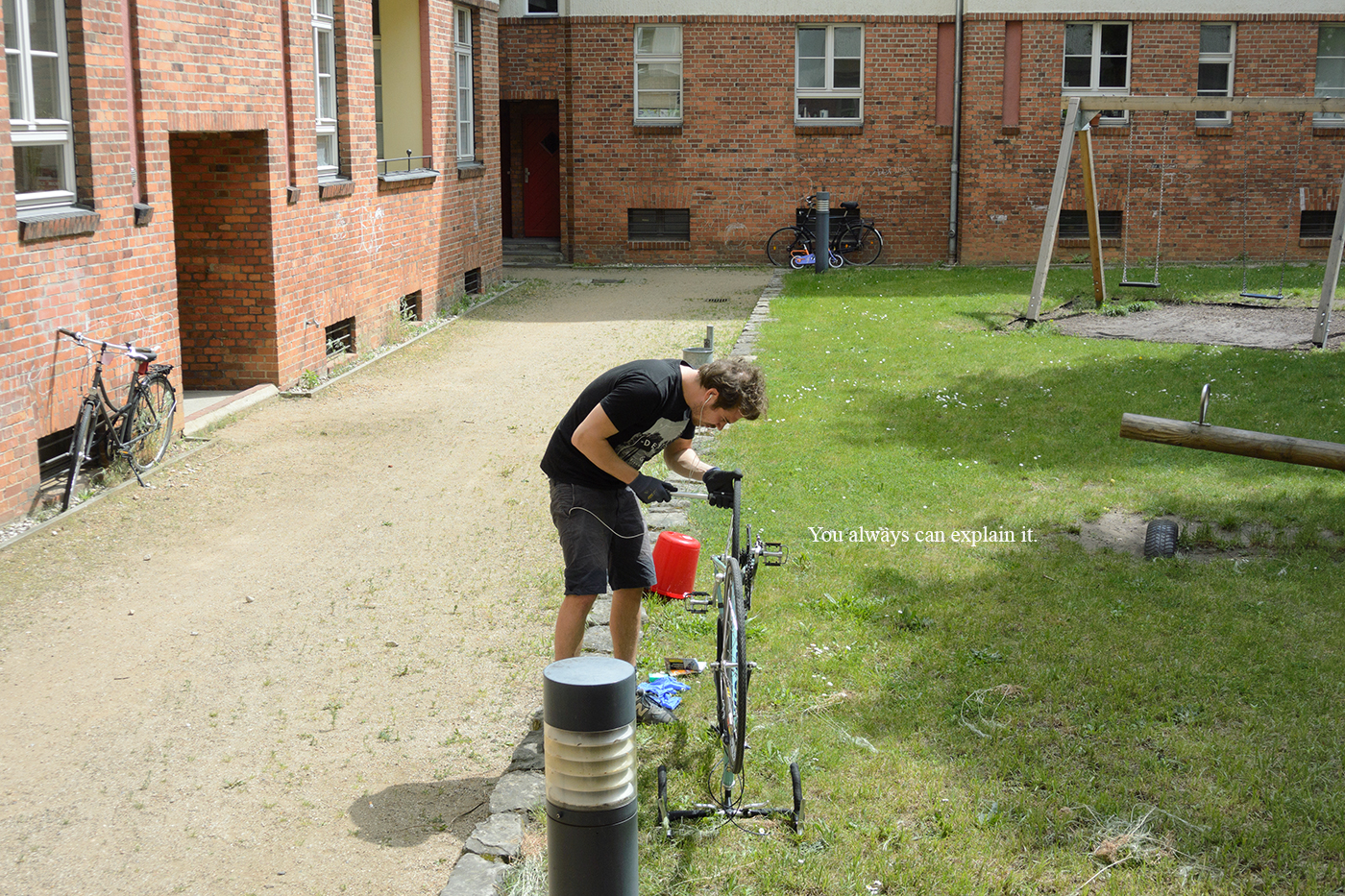All photographs in Two Different Animals are made at the clock times determined by random numbers, which immediately turns the logic of decision-making upside down. The photographs are made not when something relevant to a predefined subject or idea is happening; instead, at a particular point in time I have to start paying attention to what I see and find possibilities for photography. In other words, the use of random numbers is aimed at the intensification of perception and involvement in what is happening around. Such strategy leads, among other things, to the new subjects and themes appearing in the photographs, which wouldn't have occured without me being forced to search for them. In this series it's people at the moment of some occupation that became such motif. Aside from random numbers, the text is used: it emerges simultaneously with the photograph — mainly it comes from the speech that could be heard at the moment of photographing. Text here is opening up possibilities for interaction with other people, like those who offered their interpretation and read the texts from the pictures.
Every incorporation of a new medium cancels the existing logic and forces one to invent new balance between the components, while the capabilities of one medium emphasize the limitations of the other. A photograph cannot literally contain a thought. In order to "add" a thought into a photograph, it's possible to write it onto a picture (text visually takes its own place within the image). A thought that's initially in one's mind can be communicated only by expressing it, for example, in words. The spoken word can be written down as text, but the expression and intonation inherent in the spoken word disappear. Text can be read aloud, and then the situation of interpretation occurs — people read the text but they are not occupied with creating its original meaning, conveying their own thoughts. They live through the text, filling it (or not) with their involvement and attitude towards what they're reading. Recorded speech is not just the message communicated, but also sound: the recordings are edited and take shape of a piece of music.
"The hybridizing or compounding of media offers an especially favorable opportunity to notice their structural components and properties", according to Marshall McLuhan. This allows to notice the way one's own perception works, moving — hopefully — towards the state of heightened sensitivity.
